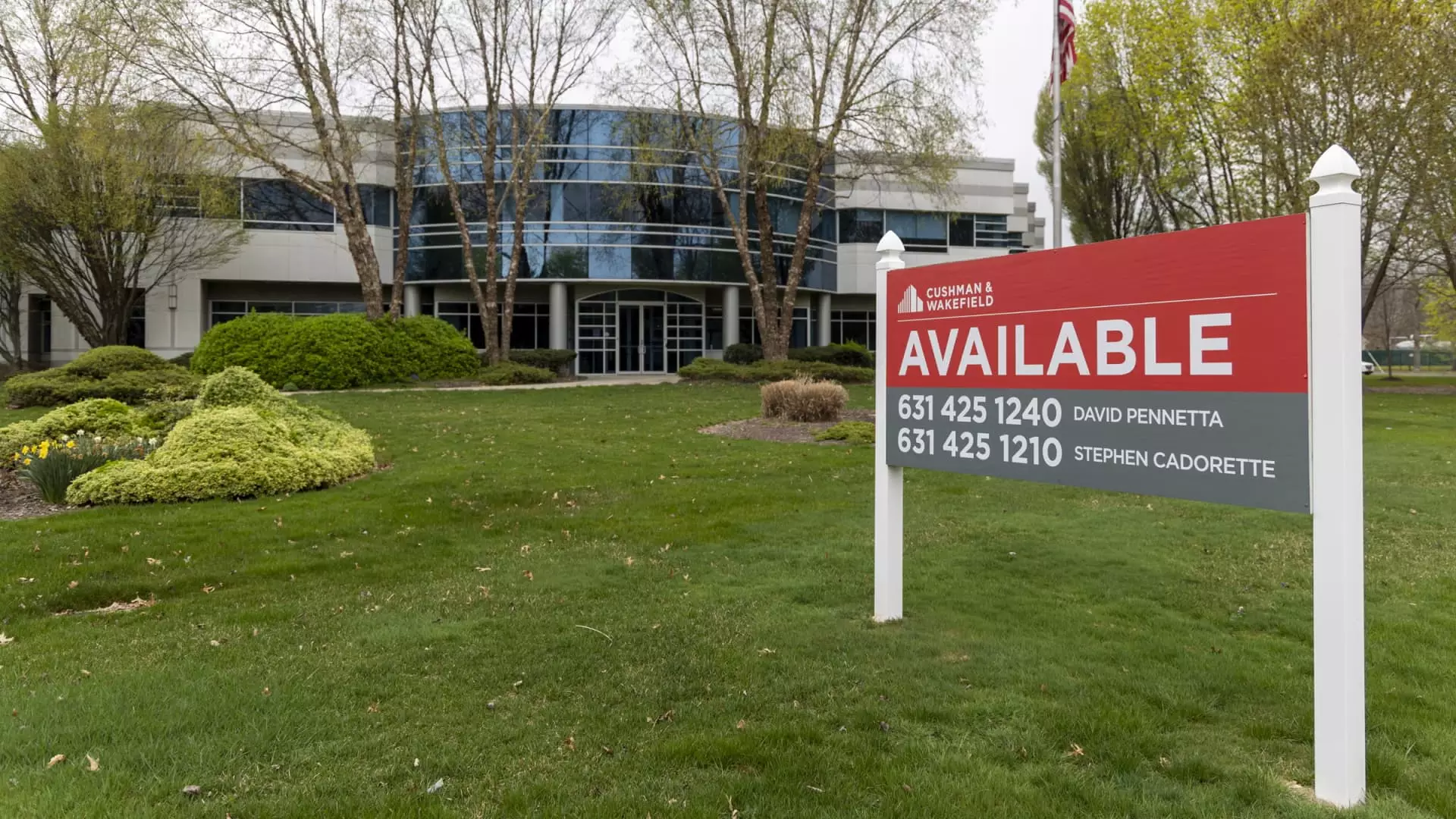In September 2023, a significant development occurred in the financial landscape when the Federal Reserve initiated its first interest rate cut since 2020, lowering the Fed funds rate by 50 basis points. This move has sparked renewed interest in commercial real estate (CRE), a sector that had been grappling with stagnation for over a year. Lower interest rates typically translate to cheaper borrowing, which could catalyze much-needed activity in a market that has seen transaction volumes plummet due to a myriad of factors such as rising costs, poor tenant demand, and a burgeoning property supply.
Wells Fargo analysts have characterized this change in monetary policy as “the most notable green shoot” for the CRE market, indicating that the Fed’s easing stance, while not a cure-all, lays the foundation for a potential recovery. This sentiment is bolstered by the assertion from industry experts that the psychological impact of smaller rates can significantly influence market stability and encourage borrowers who have been sitting on the sidelines to re-enter the market.
Evidence of improving market sentiment is manifesting in increasing levels of transaction and refinancing activity. According to reports from Walker & Dunlop CEO Willy Walker, the commercial real estate financing firm observed a definitive uptick in sales, indicating a shift away from the prolonged state of inaction that characterized the tightening phase. The second quarter of 2024 saw transaction volumes increase for the first time since 2022, fuelled largely by revitalization in the multifamily sector, which reported more than $40 billion in sales—a 13.9% increase from the previous quarter despite a year-on-year decline of 9.4%.
This burgeoning activity suggests that the previously paralyzed market is beginning to thaw, but it remains to be seen how sustainable this trend will be. Analysts caution that while the signs of recovery are promising, they are coupled with a complex array of challenges that could slow progress down the line.
While the broader CRE landscape shows signs of improvement, the office sector remains mired in a struggle to regain its footing. The cyclical challenges stemming from the pandemic—including a profound shift towards hybrid work arrangements—have resulted in an oversupply and rising vacancy rates that have left many office buildings languishing. Notable recent developments, such as a modest increase in net absorption—the measure of occupied office space—do little to alleviate the fact that the overall demand trajectory remains bleak.
Analysts from Wells Fargo report that the rise in vacancy rates has reached a staggering high of 16.7%, suggesting that the complexities of returning to pre-pandemic office utilization levels will likely take much longer than anticipated. An increase in visitation rates in major urban centers, such as Manhattan, provides some hope, but the prevailing issues, including stagnant demand and persistent structural challenges, signal that the office sector is in for a lengthy recovery process.
Amidst the uncertainties in other sectors, multifamily real estate is emerging as a beacon of opportunity. Reports indicate that demand for rental units reached its highest level in nearly three years, the silver lining in an otherwise tumultuous market. The intense demand stems from a scarcity of affordable single-family homes, propelling potential buyers to consider rental options instead.
The dynamics influencing this shift include a fundamental change in consumer behavior and housing economics. While rent growth has significantly slowed to about 1%, favorable market conditions, such as stable vacancy rates at 7.8% for the first time in over two years, suggest a more balanced supply-demand landscape. As high homeownership costs continue to deter potential buyers, the outlook for the multifamily sector remains optimistic.
While the recent Federal Reserve interest rate cuts signal a potential turning point for the CRE market, the path forward is riddled with both challenges and opportunities. As the market recalibrates itself, sub-sectors like multifamily could lead the way toward recovery, even as the broader office sector faces a longer and more arduous road to stability. The evolving dynamics of demand and supply, coupled with sustained interest in attractive financing options, will ultimately shape the fate of the commercial real estate market in 2024 and beyond. It is essential for stakeholders to remain agile and responsive to these shifting tides to navigate the complexities ahead successfully.

